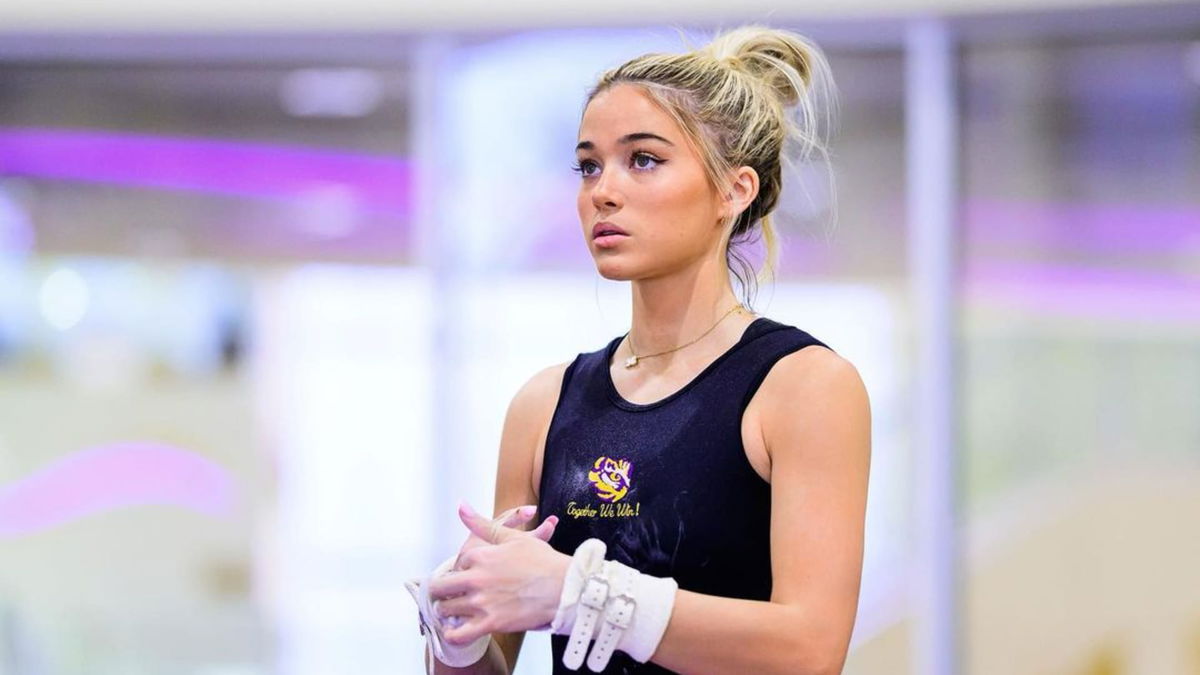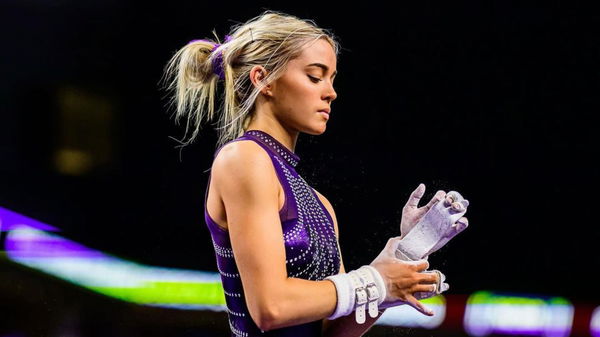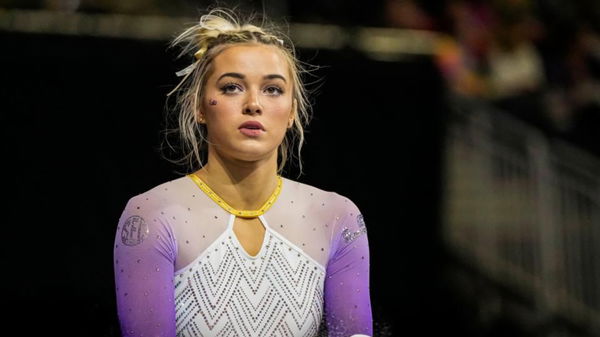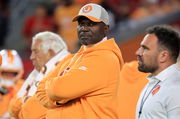

Olivia Dunne’s journey as a gymnast ended not with a final salute on the mat but in a doctor’s office, where her Olympic hopes had quietly slipped away years before. Known for her poised routines and digital popularity, Dunne finally disclosed an injury few had ever heard of, one that had altered her career before it ever truly reached the global stage. As she steps away from the sport for good, she is now telling the full story behind the injury that closed the door on her Olympic aspirations long before her recent knee fracture ended her NCAA career.
Watch What’s Trending Now!
The final chapter came in April 2025, when Dunne announced her retirement from competitive gymnastics following her final season with LSU. A knee injury, diagnosed as an avulsion fracture in her patella, had prevented her from competing in her last home meet in March. Though she remained part of the team’s final push through the NCAA semifinals, her role had shifted from athlete to spectator. The fracture, a rare condition where a portion of the kneecap is torn away by tendon stress, had effectively ended her time in competition.
But the injury that had perhaps the greatest impact occurred far earlier, and until now, Olivia Dunne had not spoken publicly about it in detail. Sitting across from Stephanie McMahon in a recent interview, she revisited a critical moment from her teenage years that had reshaped the course of her athletic life. “I was actually competing on her ankle,” Dunne recalled sitting in an conversation with Stephanie McMahon in the latest episode of YouTube Podcast, What’s Your Story? With Steph McMahon. “I think the 2018 USA Championships. And part of my ankle bone died.” McMahon, visibly surprised, asked for clarification. “It’s called an OCD,” Dunne explained. “It just died. So my Olympic dreams died with it.”
ADVERTISEMENT
At the time, Dunne had been among the more promising young gymnasts in the United States, progressing steadily through the elite levels of competition. The injury, known formally as osteochondritis dissecans, results in the death of bone beneath the cartilage due to reduced blood flow. It is painful, difficult to treat, and rare in athletes of her age. The damage was not immediately career-ending, but its implications became clear. “That was one of my first real injuries,” she said. Livvy added, “And I’ve actually never gotten any surgery, which is kind of crazy.”

ADVERTISEMENT
Though surgery is often considered inevitable for elite gymnasts who experience chronic injuries, Dunne opted for a different path. “You know what? I think if I just give myself time to heal, I can heal without surgery,” she said. “So that’s something I take pride in. I have never needed surgery as a gymnast, which is very uncommon.”
ADVERTISEMENT
Instead of pursuing the Olympic route, she eventually moved into collegiate gymnastics, joining LSU and becoming one of the most recognized athletes in NCAA sports. Her influence extended beyond the gym floor, as she became a leading figure in the NIL (Name, Image, Likeness) era of college athletics.
Despite the injuries, Dunne remains deeply connected to the sport. “I’ll always be a gymnast at heart,” she said in her retirement statement. The journey was not as she imagined in childhood, but in closing one chapter, she leaves behind a story that extends far beyond medals and podiums.
ADVERTISEMENT
Olivia Dunne reveals why she walked away from Team USA to find joy at LSU
Few outside the gymnastics community ever realized Olivia Dunne once wore the Team USA leotard. The LSU senior, now known widely for her collegiate success and digital presence, quietly held a place on the national team, competing abroad, collecting medals, and confronting an environment that, for many athletes, became synonymous with distress. Her tenure included a gold-medal performance in Italy, a high point eclipsed, she suggests, by a broader unease. “So I used to compete for Team USA,” Dunne said during a recent conversation. “I feel like not a lot of people actually know that.”

ADVERTISEMENT
Though proud of the achievement, Dunne has chosen not to dwell on that chapter. She referenced the Karolyi Ranch and the associated era of USA Gymnastics with careful reservation, aware of its implications. The decision to part ways with the elite track came as a necessary pivot. Persistent injuries had begun to erode her passion, and the surrounding atmosphere no longer aligned with the athlete, or person she wanted to become. “It was just not the right environment for me,” she said. “And I kept getting hurt.”
Top Stories
Forced to Leave FOX, Cowboys Legend Troy Aikman Says ESPN Is Like ‘U.S. Government’ & Clearly Distinguishes the Two Networks

Todd Bowles Points Fingers at Baker Mayfield & Co. in a Strong Statement That Could Get Him Punished After Bucs Loss

What Settlement Agreement Have Michael Jordan & NASCAR Reached? Everything to Know From Evergreen Charters to Payout

Arthur Blank Makes Firing Decision on Raheem Morris After Falcons HC Lands on Hot Seat

Cowboys Legend Troy Aikman Teases NFL Comeback After Airing FOX’s Dirty Laundry

Charley Hull Opens Up on Traumatic Divorce from Ex-Husband for the First Time Ever

Her path eventually led to Louisiana State University, where college gymnastics provided not only physical recovery but emotional restoration. At LSU, Dunne rediscovered what drew her to the sport in the first place. The rigid expectations and isolating culture of elite training gave way to team camaraderie and personal freedom. “You know what?” she recalled deciding, “I’m going to go enjoy the sport again in college, go to LSU, heal up and enjoy and love the sport.” In stepping away from the national spotlight, she found something far more lasting. She found peace with the sport she once nearly lost.
ADVERTISEMENT
ADVERTISEMENT
ADVERTISEMENT
ADVERTISEMENT

